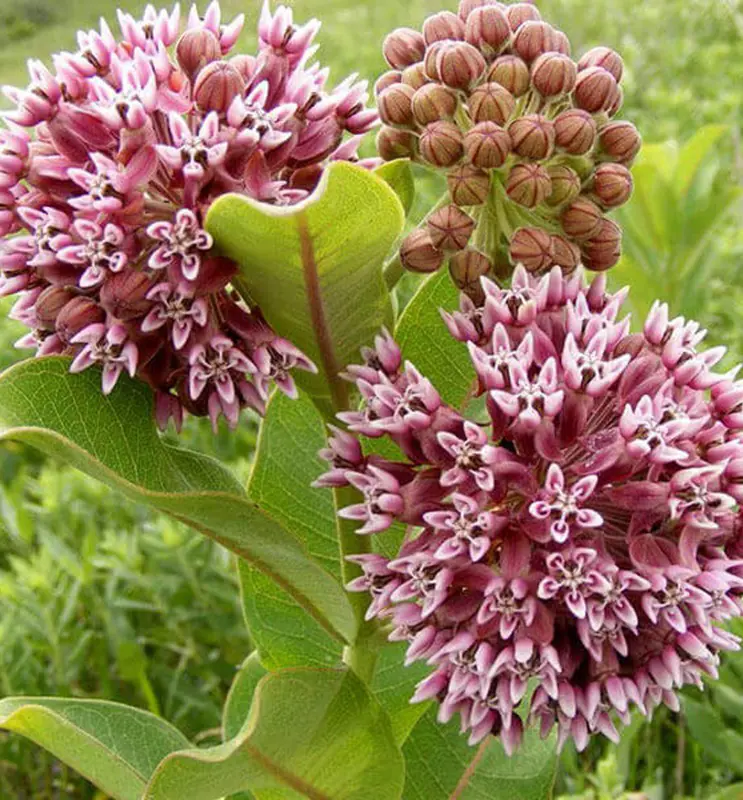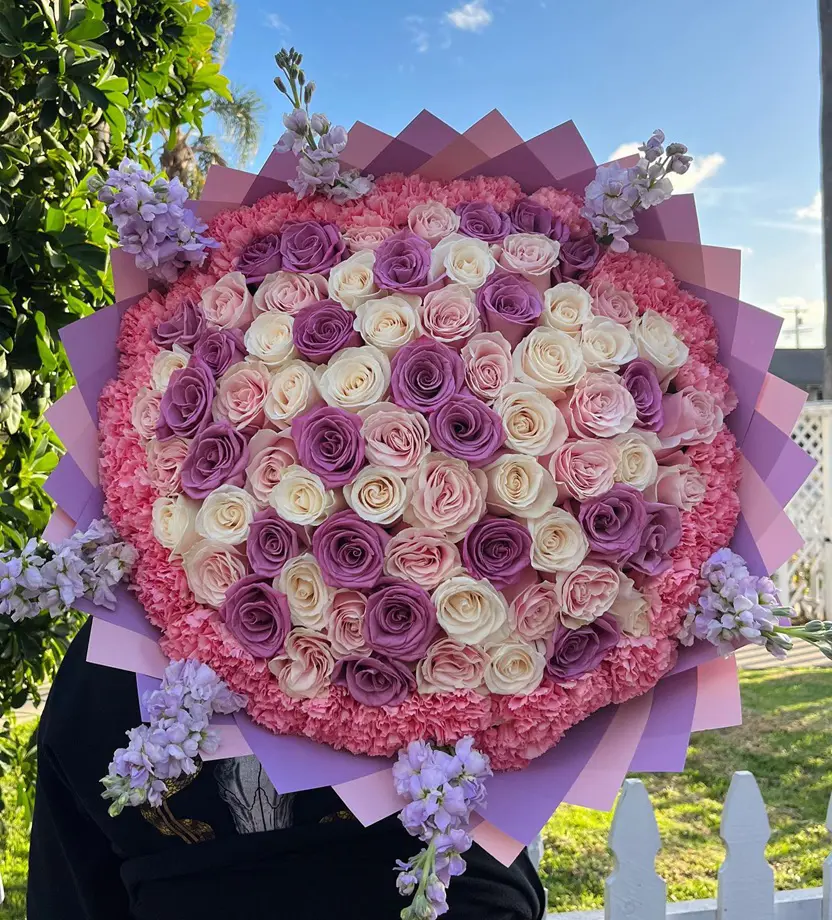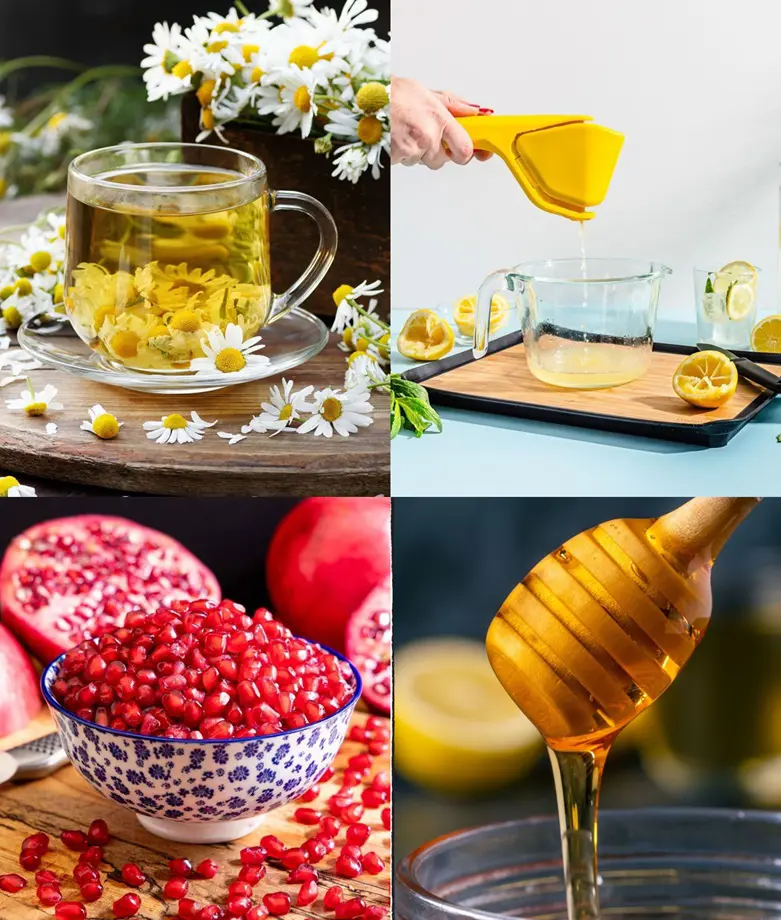20 Best Low Light Indoor Plants For Your Home
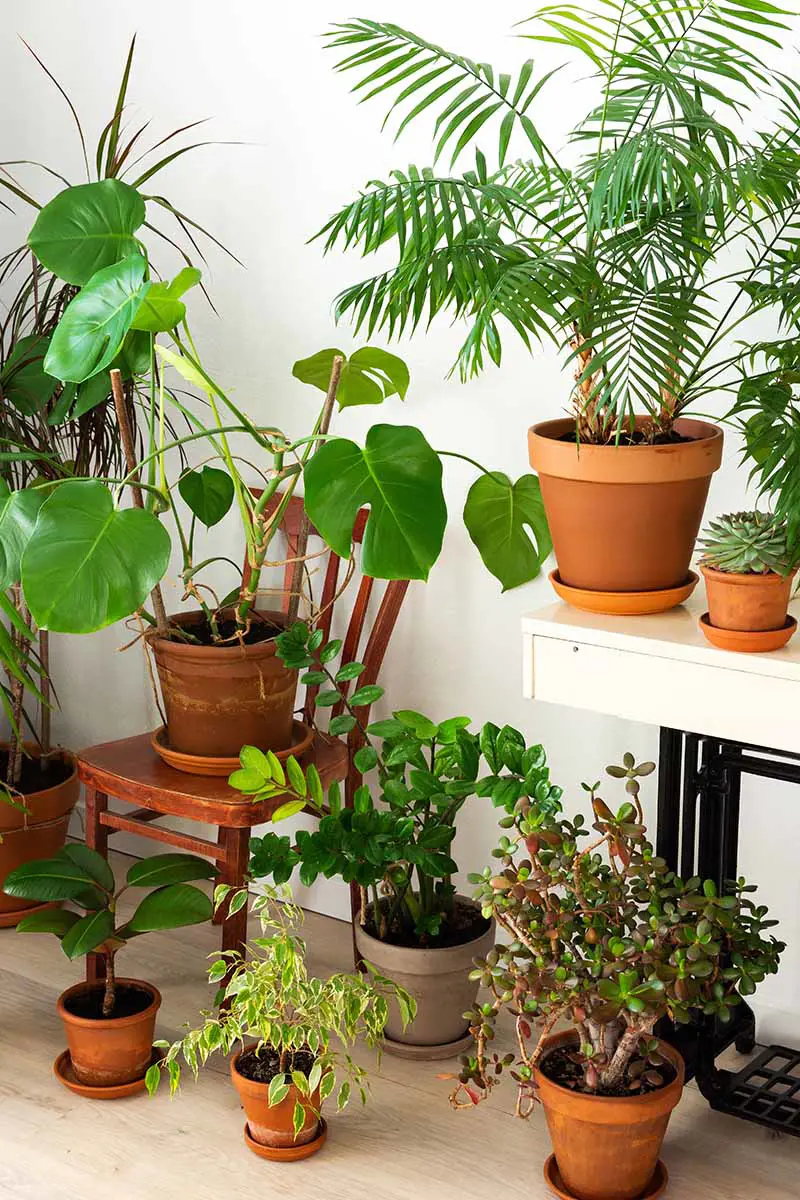
This post may contain affiliate links. If you make a purchase through links on our site, we may earn a commission.
Are you tired of your indoor plants withering away in dimly lit corners? If so, it's time to discover the best low-light indoor plants that can thrive in even the darkest of spaces.
Whether you're a seasoned plant lover or a beginner with a black thumb, this article will guide you through a curated selection of plants that not only survive but also flourish in low-light conditions.
1. Lucky Bamboo
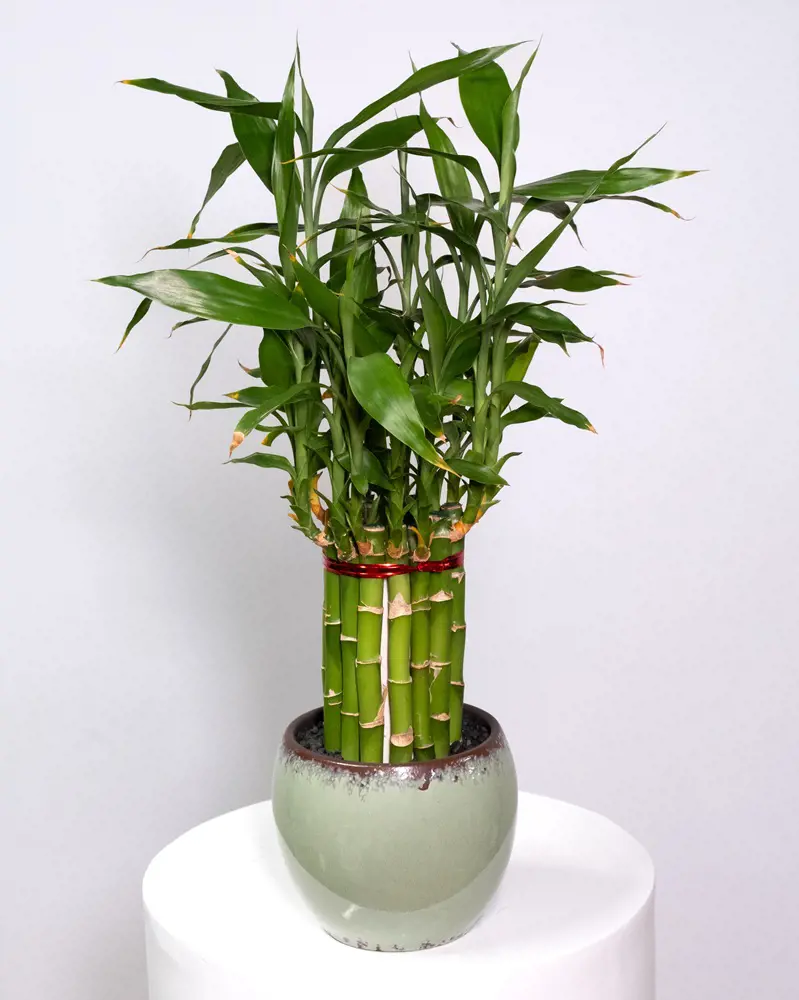
Lucky Bamboo, scientifically known as Dracaena Sanderiana, is considered one of the best indoor plants for low light conditions. It requires only a few hours of daylight to thrive, making it an ideal choice for spaces with limited natural light.
Lucky Bamboo has a mature size of around 2 to 3 feet, making it a compact and manageable plant for indoor environments. Its appearance is characterized by slender, green stalks with delicate leaves. Additionally, Lucky Bamboo holds cultural significance in Feng Shui, symbolizing good fortune and positive energy.
2. Hoya

Hoya, often referred to as the "wax plant," is a remarkable indoor plant that excels in low light conditions, requiring only a few hours of indirect sunlight daily. Its vines can grow to impressive lengths, making it a perfect hanging or trailing plant.
Hoya is known for its waxy, star-shaped flowers and lush, deep green foliage. Beyond its aesthetic appeal, Hoya holds cultural significance in some regions, symbolizing good fortune and positive energy. With its ability to thrive in minimal light, Hoya brings beauty and a touch of serenity to indoor spaces with less natural sunlight.
3. Snake Plant
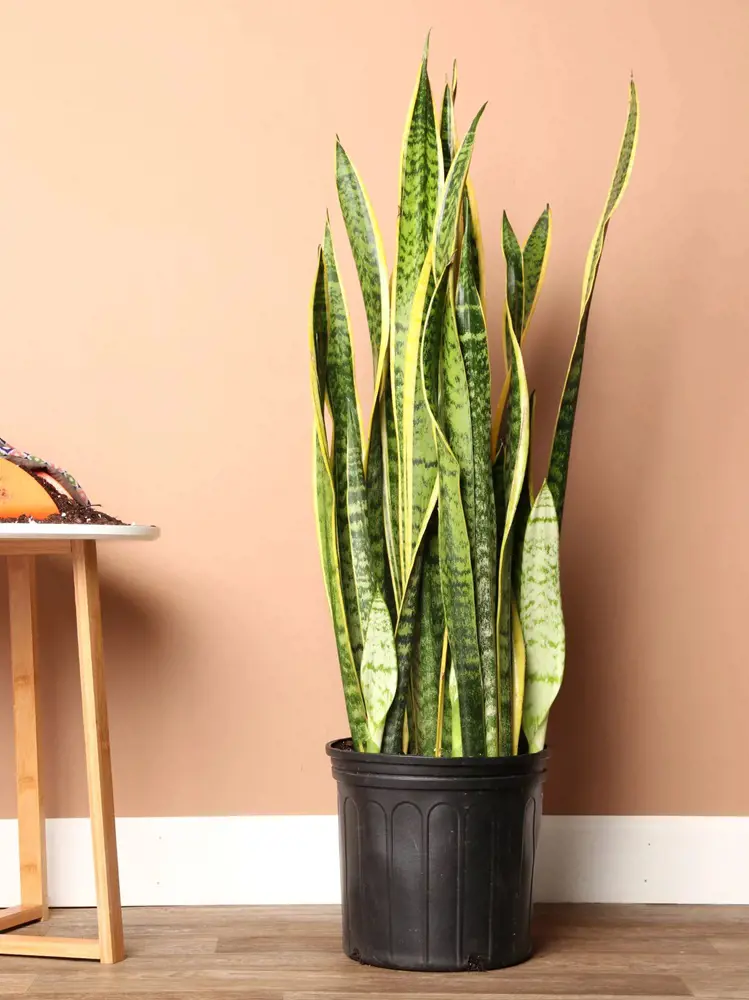
The Snake Plant (Sansevieria), also known as the "Mother-in-Law's Tongue," requires minimal daylight hours to thrive making it a remarkable indoor plant that excels in low light conditions. This hardy plant boasts striking, upright leaves with variegated patterns, adding a touch of elegance to indoor spaces.
It's renowned not only for its adaptability but also for its cultural significance as a symbol of resilience and luck. The Snake Plant's mature size typically ranges from 2 to 4 feet, making it a convenient and aesthetically pleasing choice for low-light environments.
4. Staghorn Fern

The Staghorn Fern is an ideal indoor plant as it requires only indirect light for a few hours each day. It grows to a mature size of 2-3 feet tall and wide, with long, leathery fronds resembling the antlers of a stag.
This unique appearance makes it a popular choice for hanging baskets or mounted on walls. Apart from its aesthetic appeal, the Staghorn Fern is culturally significant as it is believed to bring good luck and prosperity when displayed in homes.
5. English Ivy
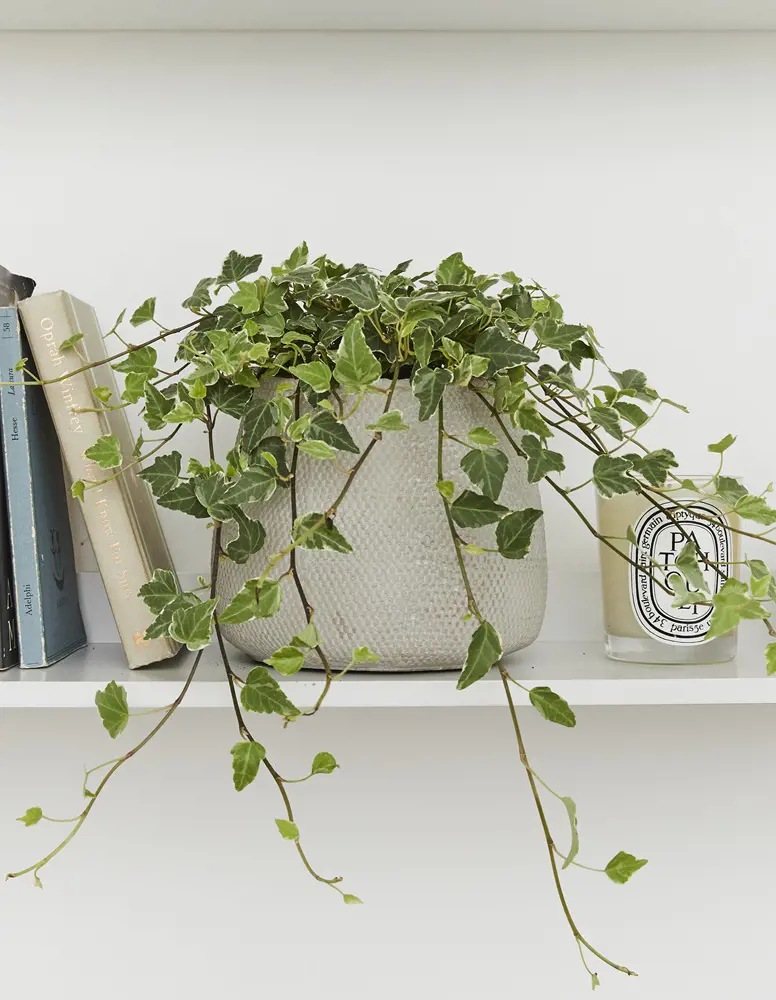
English Ivy (Hedera helix) is another splendid indoor plant that thrives without the need for extensive sunlight. Its lush, cascading vines and signature lobed leaves bring a touch of elegance to any room. Whether adorning a hanging basket or climbing a trellis, English Ivy adds a charming, natural element to interior décor.
When cared for, it can reach a mature size of around 6-8 feet. Its adaptability and low-light tolerance make it an ideal choice for those looking to introduce greenery and a touch of sophistication to their indoor spaces.
6. Golden Pothos

The Golden Pothos (Epipremnum aureum) is a popular indoor plant among people living in apartments because it thrives without demanding much sunlight. Its heart-shaped leaves are marbled with shades of green and yellow, adding a touch of vibrancy to the interiors.
Styling options are versatile; they can cascade elegantly from a hanging pot, climb up a trellis, or sit in a decorative container. With a mature size ranging from 6 to 10 feet, the Golden Pothos fills the room with lush, trailing foliage, making it a low-maintenance, aesthetic addition to any indoor setting.
7. Spider Plant

The Spider Plant (Chlorophytum Comosum) is a top choice for indoor spaces with low light, as it's adaptable to a range of lighting conditions. It can thrive with just a few hours of indirect light each day. With its arching, variegated leaves that resemble spiderettes, it's both visually appealing and air-purifying.
Spider Plants are often considered lucky, symbolizing good fortune and abundance in various cultures. Their mature size typically reaches around 12-24 inches in height, making them a compact, attractive addition to homes or offices with limited natural light.
8. Peace Lily

The Peace Lily (Spathiphyllum) is another remarkable indoor plant that requires only minimal daylight hours to flourish making it a top choice for low-light conditions. With its elegant, dark green leaves and unique white blooms resembling a white flag of peace, it adds both beauty and symbolism to indoor spaces.
The Peace Lily has cultural significance as a symbol of tranquility and purity. It typically reaches a mature size of 1 to 4 feet, making it a versatile choice for low-light environments, where it not only thrives but also purifies the air, enhancing the overall ambiance.
9. Maidenhair Fern

The Maidenhair Fern is a lovely indoor plant, ideal for those seeking greenery in low-light conditions. Its delicate, feathery fronds give it a graceful appearance, resembling a cascade of lacy leaves.
This fern's charm is best showcased in hanging baskets, making it a perfect choice for creating a cascading effect or in small pots on shelves. The Maidenhair Fern tends to reach a mature size of about 12 to 18 inches, making it a compact yet elegant addition to indoor spaces where sunlight is limited.
10. ZZ Plant
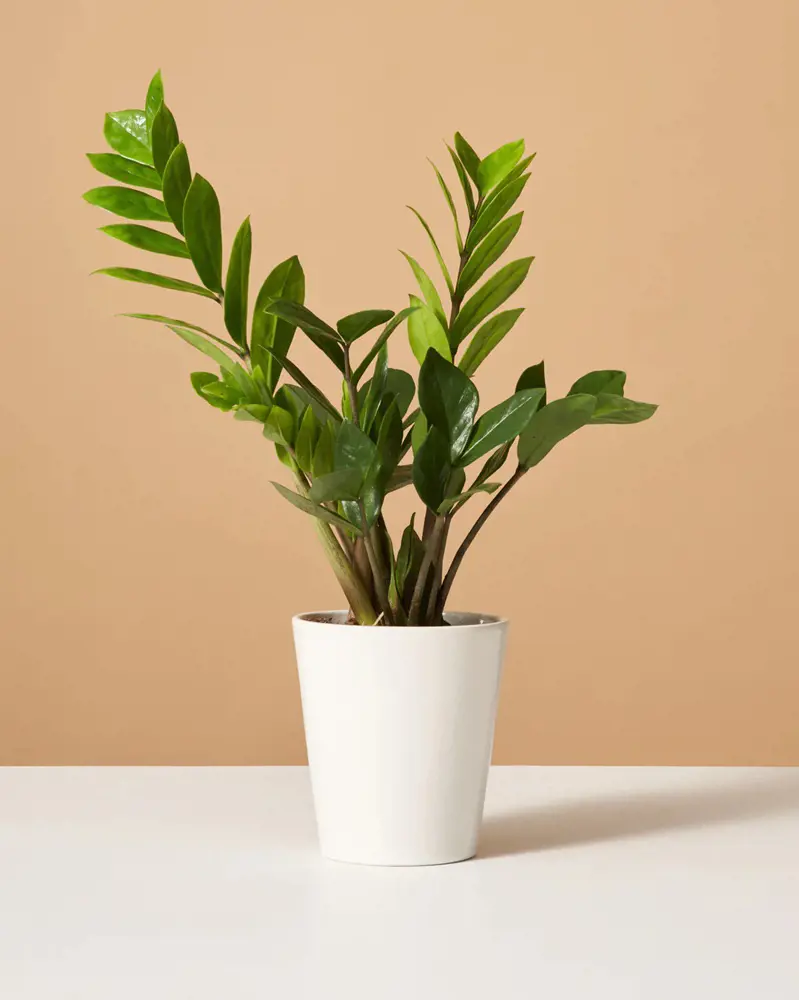
The ZZ Plant is a remarkable indoor plant known for its resilience in low-light conditions. Requiring minimal daylight, it can thrive in environments with just a few hours of indirect or artificial light. This plant boasts glossy, dark green leaves that add a touch of elegance to indoor spaces.
ZZ Plants are valued not only for their aesthetic appeal but also for their cultural significance as symbols of prosperity and good fortune, making them a popular choice for homes and offices, where they grow to a mature size of about 2-3 feet in height.
11. Anthurium
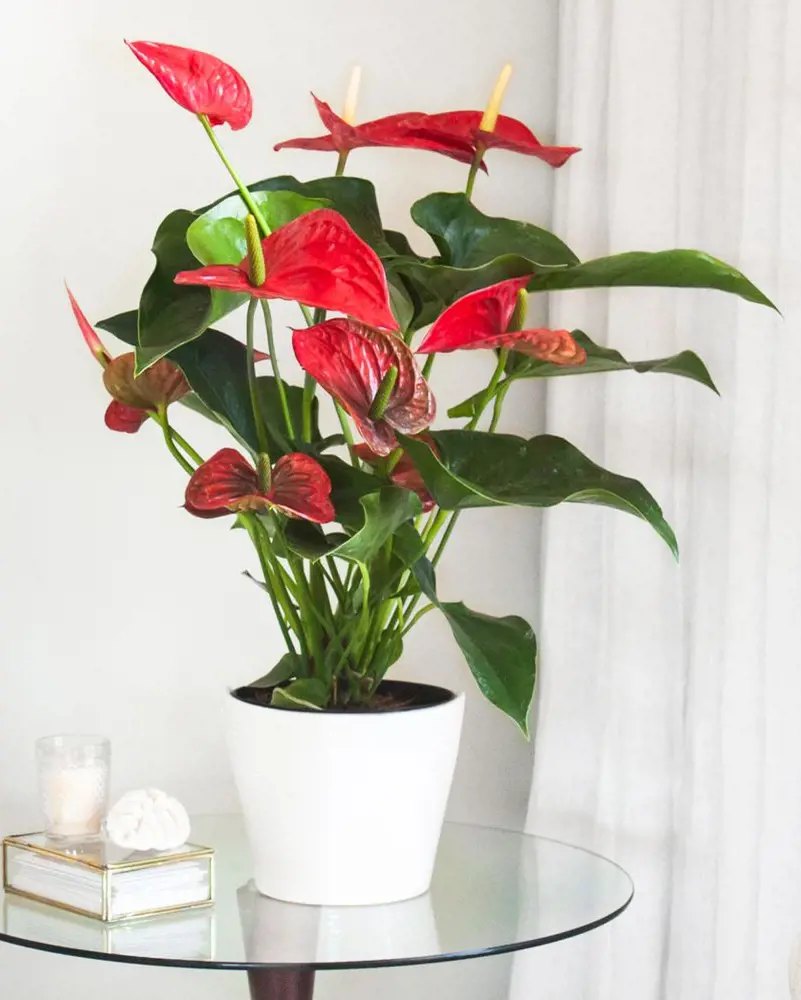
Anthurium is a stunning indoor plant that thrives in low-light conditions, making it perfect for spaces with limited sunlight. With its glossy, heart-shaped leaves and vibrant, long-lasting flowers, Anthurium adds a touch of elegance and color to any room.
To style this plant, place it in a decorative pot or hanging basket, allowing its glossy foliage to cascade gracefully. Anthuriums generally reach a mature size of 1 to 2 feet in height, making them suitable for tabletops, shelves, or as a statement piece on the floor.
12. Swiss Cheese Plant

The Swiss Cheese Plant, also known as Monstera deliciosa, is considered a great indoor plant for low light conditions due to its adaptability. It has large, glossy leaves with distinct holes, which allows it to efficiently capture and utilize the available light and giving it the iconic name as the holes resembles the famous Swiss cheese.
Additionally, the plant has evolved in the understory of tropical rainforests, where it receives filtered light. This adaptation enables it to tolerate lower light levels compared to other plants, making it an ideal choice for indoor spaces with limited natural light.
13. Prayer Plant

The Prayer Plant, scientifically known as Maranta Leuconeura, only requires indirect sunlight or will do just fine in artificial light making it an excellent choice for indoor spaces with low light conditions. This plant typically grows to a mature size of around 12-18 inches in height and spreads out to create a lush, tropical appearance.
The leaves of the Prayer Plant are uniquely patterned with deep green hues and vibrant red veins, adding visual interest to any space. Beyond its aesthetic appeal, this plant holds cultural significance as it is believed to bring peace and tranquility when included in prayer or meditation spaces.
14. Dragon Tree

The Dragon Tree, scientifically known as Dracaena Marginata, is a popular choice for indoor plant enthusiasts limited by the low-light condition of their homes. With its long, slender leaves that taper to a point, it adds a touch of elegance to any space.
This plant can thrive in areas with minimal sunlight, making it perfect for offices or rooms with limited natural light. To style the Dragon Tree, consider placing it in a decorative pot or hanging basket to elevate its beauty. As it matures, it can reach a height of up to 6 feet, making it an impressive centerpiece for any room.
15. Corn Plant
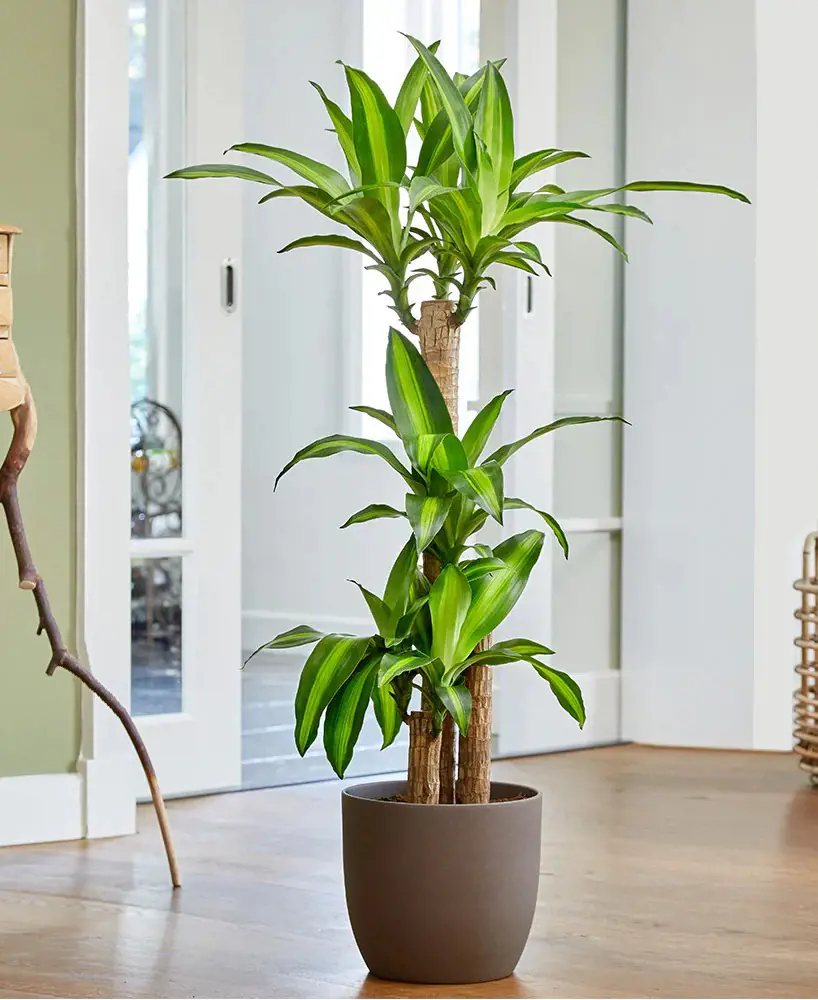
The Corn Plant (Dracaena fragrans) is a superb indoor choice for low-light environments as it can flourish with just a few hours of indirect or artificial light needing minimal daylight to thrive. This plant features striking, arching leaves in shades of green and yellow, lending an attractive tropical touch to indoor spaces.
Beyond aesthetics, the Corn Plant is culturally associated with good luck and positive energy, making it a popular choice for homes and offices. It grows to a mature height of 4-6 feet, making it an excellent addition to low-light spaces that need a touch of greenery.
16. Polka Dot Plants
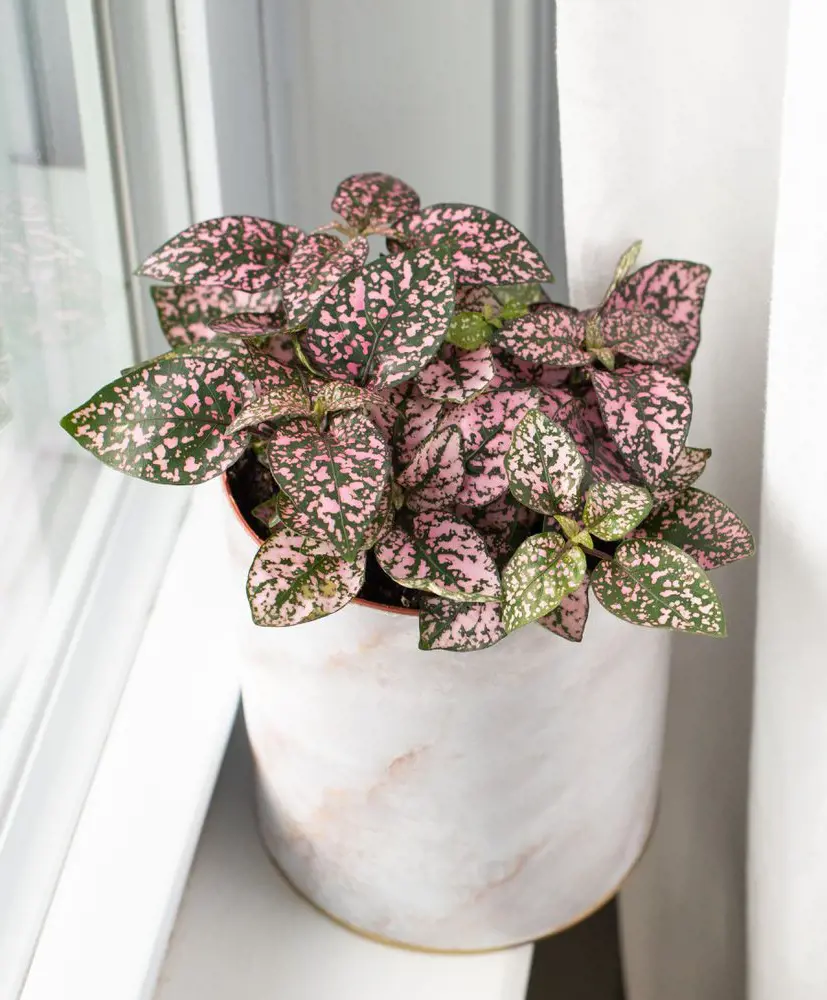
Polka Dot Plants, also known scientifically as Hypoestes Phyllostachya, are another excellent indoor plant renowned for their adaptability to low-light settings. They thrive with just a few hours of indirect or artificial light, making them ideal for spaces with limited sunshine.
These charming plants are prized for their vibrant, spotted leaves, available in various color combinations. While their mature size typically reaches 12-18 inches in height, they can be easily maintained through pruning. Culturally, Polka Dot Plants are often associated with whimsy and creativity, adding a cheerful and artistic touch to indoor environments.
17. Guzmanias
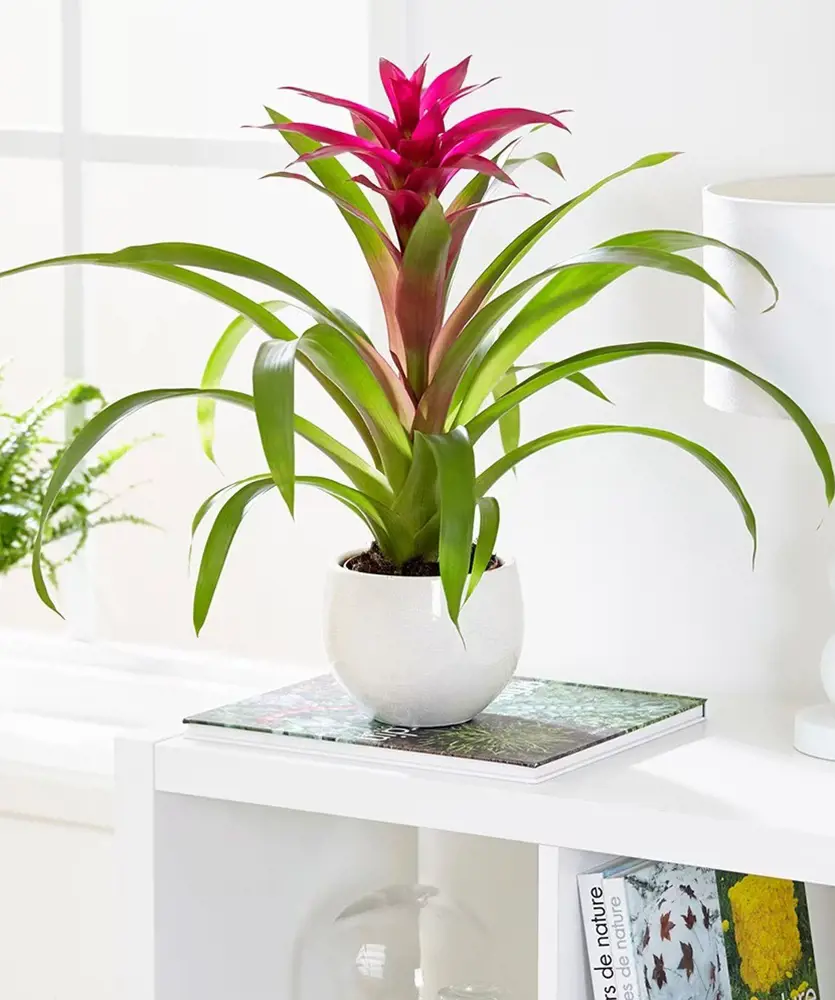
Guzmanias are exceptional indoor plants in terms of look and low maintenance, they are also well-suited for low light conditions, requiring only minimal indirect daylight. They maintain a compact mature size, making them ideal for smaller spaces.
With their striking rosette of long, vibrant leaves and a tall, colorful flower spike, Guzmanias adds a touch of tropical elegance to indoor settings. Their cultural significance lies in their symbolism of welcome and hospitality, making them popular choices for home decor. With minimal care and their ability to purify indoor air, Guzmanias bring both beauty and a warm, inviting ambiance to any room.
18. Parlor Palm
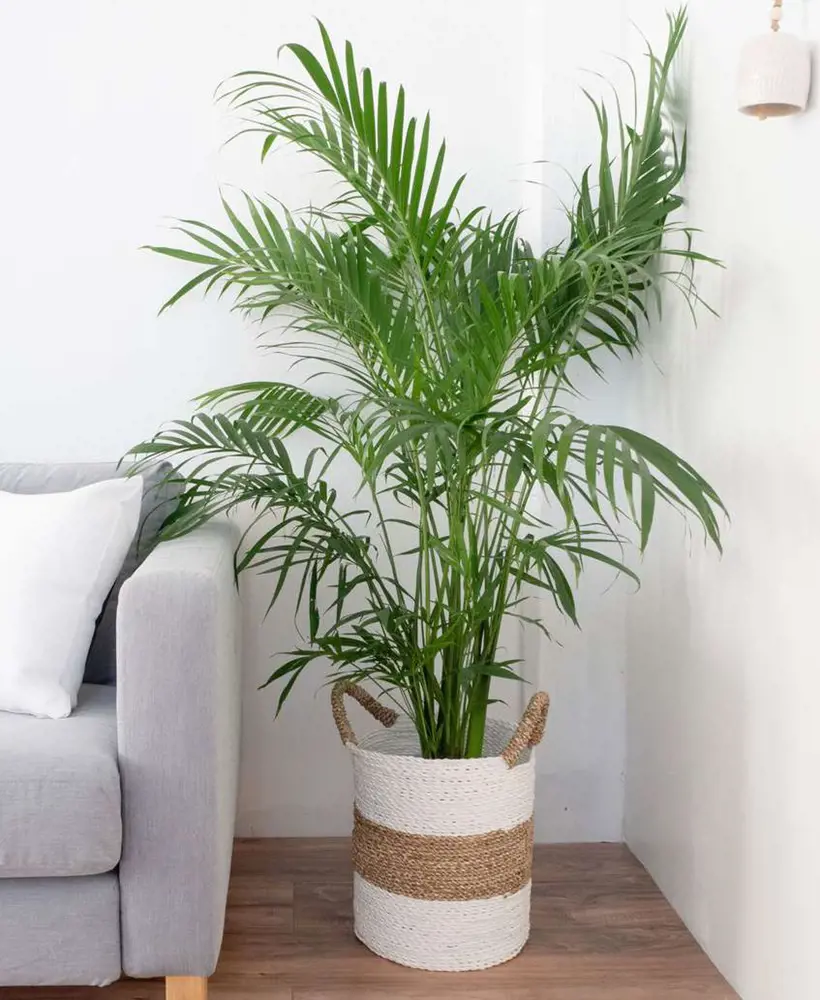
The Parlor Palm, also known as Chamaedorea elegans, is another popular choice for indoor gardening due to its ability to thrive in low sunlight conditions. This plant features delicate, feather-like fronds that gracefully arch from its slender stems, creating a lush and tropical appearance.
With its compact size, the Parlor Palm is an excellent choice for smaller spaces, reaching a mature height of around 2-4 feet. To style this plant, you can place it in a decorative pot or basket, allowing the vibrant green foliage to add a touch of natural beauty to any room. Whether placed on a shelf, a side table or as part of a larger indoor garden display, the Parlor Palm brings a touch of elegance and tranquility to any interior space.
19. Dieffenbachia Plant

The Dieffenbachia, often referred to as the "Dumb Cane," is a beloved indoor plant that thrives in low-light conditions, making it an excellent choice for homes with limited sunlight. Its large, lush, variegated leaves create a vibrant and tropical atmosphere.
Dieffenbachias can grow up to several feet in height, adding a touch of greenery to any room. Styling options abound: place them in decorative pots or let them stand as a statement piece in a minimalist setting. With their impressive foliage and low-light adaptability, Dieffenbachia plants not only beautify your space but also promote a tranquil indoor environment.
20. Moth Orchid

The Moth Orchid is a flowering plant that thrives without the need for extensive sunlight. With its elegant appearance, characterized by delicate, arching stems and resplendent, butterfly-like blooms in various colors, it's a perfect addition to any indoor space. Style it as a standalone centerpiece to emphasize its appearance.
Moth Orchids typically reach a mature size of about 1 to 3 feet in height, making them versatile for shelves, tables, or hanging containers. Their low light requirements and enduring beauty make them a popular choice for those seeking a touch of serenity and sophistication indoors.
Recent posts
Gardening
Gardening
How To Grow Grass From Seed? Planting And Caring Guide
Growing grass seems like an easy task. But the ones who are already into it know how much work and patience is required for its maintenance, to transform the outdoor space into a lush, green oasis. For beginners who are starting from scratch or someo...
Gardening
How To Grow, Plant And Care Milkweed From Seed
Planting milkweed from seed is one of the most satisfactory practices. It not only adds value to your garden aesthetics but also contributes essential instinct pollinators, including monarch butterflies. Many milkweed seeds germinate best when expos...
Gardening
18 Rose Colors And Their Meanings
Roses are not only elegant flowers but they also represent something more profound. Every color of a rose has its special meaning, making it a powerful tool when it comes to conveying messages in personal relationships and occasions. Ranging fr...
Gardening
When To Plant Vegetables – A Month By Month Calendar
Understanding when to plant vegetables is essential to successful gardening as timing alone can greatly affect the productivity and health of vegetables. A month-by-month planting calendar is useful because not every month is ideal for a specific pro...
Gardening
How To Prune Hydrangeas So That It Stays Healthy
The name hydrangea conjures clusters of flowers packed densely. Hydrangeas can grow in both old and old wood, and depending on the varieties, pruning time may differ. Pruning hydrangeas is a fundamental practice for gardeners wanting to maintain thei...
Gardening
How To Prune Roses With These 10 Steps
Pruning these thorn-filled plants might seem scary, but it's crucial for having abundant rose blooms. Cutting back old growth encourages new, vibrant growth, removes dead parts, and shapes the plant. This practice also reduces the risk of fungal dise...

